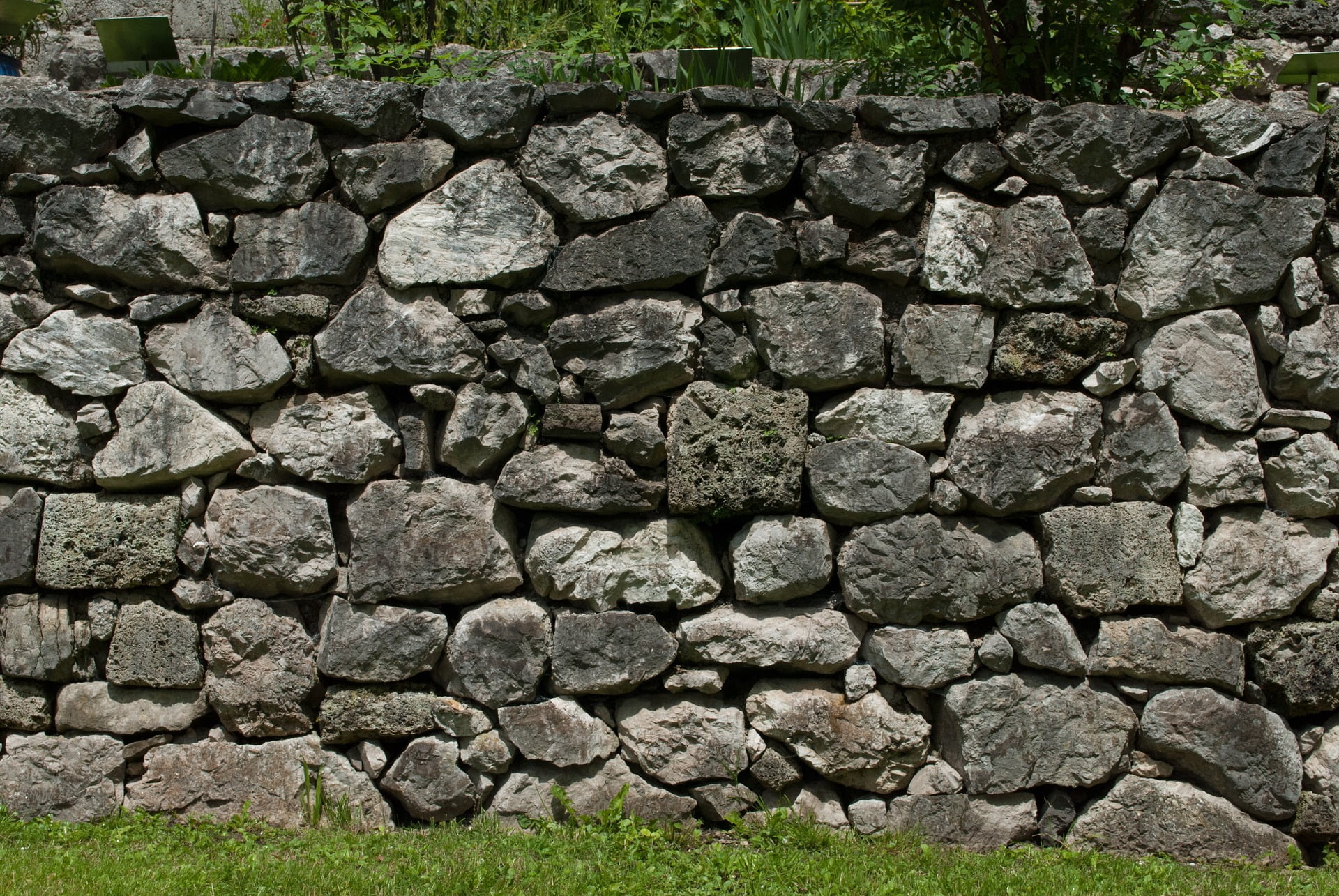Spring brings a lot of rain with it, and this could mean soil loss for some yards. Trees, plants, and grass need soil coverage to keep their roots moist and to keep growing. To help keep the soil in place you can build a retaining wall. Retaining walls help to keep the soil in place. The rain will not wash all the soil away because the wall is helping to keep it around the trees, plants, or yard. Just like the many other yard projects, there are plenty of ideas and options to explore when finding which retaining wall you want to build. We have collected what we think are the best retaining wall ideas available.
Interlocking Concrete Blocks

Interlocking concrete blocks are a great way to build a retaining wall with little materials. With this material there is no need for mortar to be purchased since the blocks hold themselves together. You can see this in the image to the right from DIY Advice. There are different kinds of interlocking blocks. Some types require pins to hold the blocks in place and others have flanges that slip over the rear edge of the preceding block. Interlocking concrete blocks do not require a footing, but some will need to have the first layer of blocks placed in a trench to keep the bottom of your retaining wall in place. When building be sure to include room for a gravel backfill and drainpipe. Some interlocking concrete blocks have hollow cores for drainage, and depending on which block you choose you can reduce some of the other work required.
Wood

For retaining walls that have the “fenced” look, picking some wooden planks as a building material is a good option. Timber retaining walls blend into a garden more beautifully than any other building material. This style will require a concrete footing, with upright stanchions. These stanchions hold the wooden planks back. Another method includes 6X6 stacked timbers that are reinforced with steel rods inserted through holes drilled through the grade. When you are purchasing your timber be sure to purchase a wood that is rated for “ground contact.” Use some gardening fabric behind the timbers when you have the planks all set up, this will ensure that the roots or nearby flowers and plants do not grow through the slats. With proper materials, building, waterproofing, and care, your wooden retaining wall can last for about 20 years.
Tires

If you have a towering hillside that has a lot of runoff and a heart for recycling, try tires as a retaining wall. Fill each tire with some concrete and they will last for a very long time. Layer each tire layer as you would brick, and your wall will have strength and drainage. If you do not have the number of tires that you need, stop into you local Tire Center or family owned maintenance shop. They usually have plenty of tires to get rid of. With this style of retaining wall it will be difficult to have plants growing around, but you will likely have some weeds peek through. You might have some luck planting vegetables though according to Mother Earth News.
Concrete

Using poured concrete as a retaining wall option can cause many problems, but it can be done. Concrete retaining walls are usually used around home with more of a modern look. You can see an example from Archi Expo to the right. The sleek lines of the house and the sharp angles of the modern home looks stunning together. Just make sure that if you live in an area that has a lot of rainfall that you avoid concrete. Rainfall causes a lot of cracking and once a concrete wall is cracked it should be retired for good.
Poured concrete retaining walls do require some experience and skill, so it is recommended that a professional be used for this kind of project. Professional concrete workers will have a plan for your retaining wall planned out by a landscape architect. This will ensure that your wall is built with adequate footings and steel. Working with concrete involves working with negative space. It requires skilled eyes and lots of practice to be able to see something that is not there yet. The footings will extend outwards from the face of the wall or out the back with a large space for drainage.
With that said, you must discuss with the person designing your retaining wall what plants you want to have growing behind the wall. Your designer will need to figure out what footing size and paving dimensions will be necessary to accommodate your plants. If you want to go the extra mile with the concrete and you know what you are doing, try using colored veneer overtop of the wall. This will add some really fun textures and colors to your retaining wall.
How Can I Incorporate Used Picture Frames into my Creative Retaining Wall Design?
Looking to give your retaining wall a unique touch? Get creative with cool garden ideas using picture frames! Incorporating used frames into your design can add a hint of charm and whimsy. You can hang empty frames as decorative elements or showcase artwork or succulents inside them. Don’t limit your creativity, and let your wall become a stunning focal point in your garden.
Ceramic Tiles and Flash

If you are going for a concrete retaining wall but do not like the look of concrete, add some color to it. Once the retaining wall is built find some ceramic tiles that you like or some mirror chips. Glue the tiles to the wall in a design that you like and grout them into place. This will add some color, personality, and personal style to your retaining wall. Adding this style will bring in the natural colors of the garden and maybe even your home. This also gives you an opportunity to bring your kids in on the project. Have them design the way the tiles will be arranged on the wall and let them help you glue them into place, all pending on age of course.
Stone

Dry stacking is another beautiful way of building a retaining wall in your garden or yard. A dry stacked stone retaining wall is absolutely stunning for any home style. Again, with the dry stacking you will not need mortar to hold the stone together. The purpose of this style is to have the natural style of the stone hold everything together.
Begin with a concrete footer because he entire length of yardage that you plan on building the wall on should have a concrete base. Once you have the footer all set up you can being stacking the stones. Since the natural grooves and angles of the stones are holding the retaining wall together you will want to take your time stacking them. Begin by setting corner stones, ones with 90 degree angles, at the ends of your wall. Follow that with setting flat face stones between the corner stones. Every three or four feet lay a tie-back stone, stones that are flat, long, and heavy, to add some extra stability to the wall. Keep laying corner and face stones until your retaining wall reaches the height you want.
Make sure that you check on a regular basis, while you build, that the retaining wall stones are stable. Once you have reached your desired height and the stones are stable, lay a final layer of cap stones. The cap stones should be smooth and flat. This will give your wall a nice finished and smooth look on the top. In our opinion this is the most beautiful of all the retaining wall ideas we’ve collected.
Choose a Retaining Wall
Retaining walls can be a life saver for gardens and yards alike. If you live in an area that has a lot of rain or your soil is very loose, any amount of rain is enough to loose a lot of your garden. Building a retaining wall will help keep your trees, gardens, and shrubs safe and sound with strong root systems. We have shown you some of the best retaining wall ideas, so do your research, pick your style, and you’re sure to have a new garden ornament that adds some stunning class.










I like your retaining wall ideas. I need some walls erected in our kitchen. We plan to expand by a few feet.